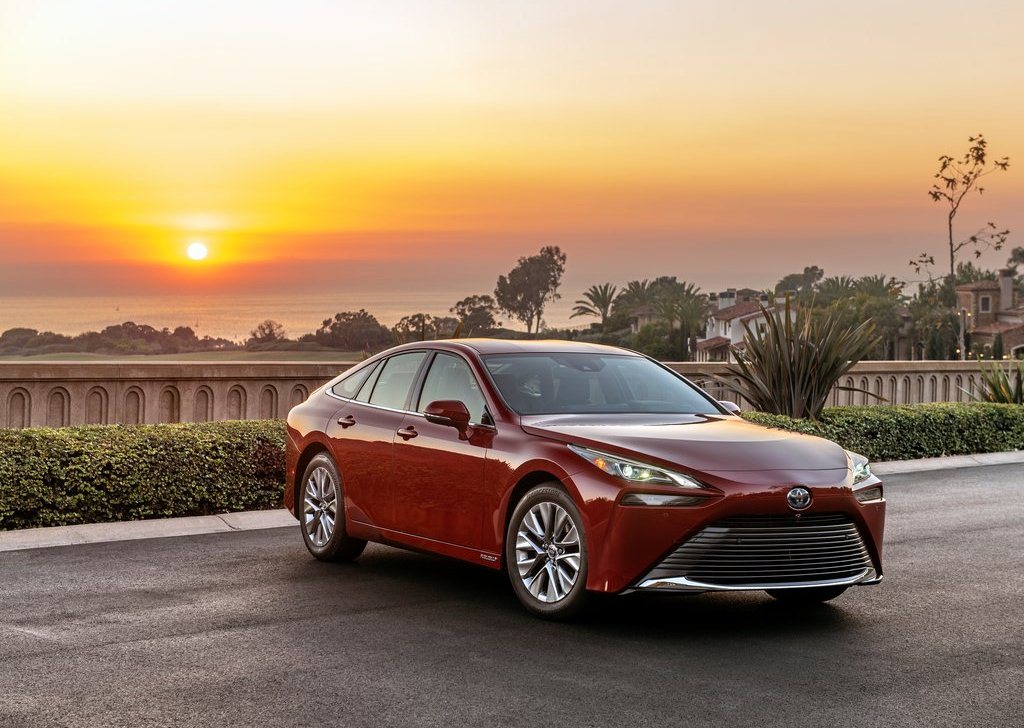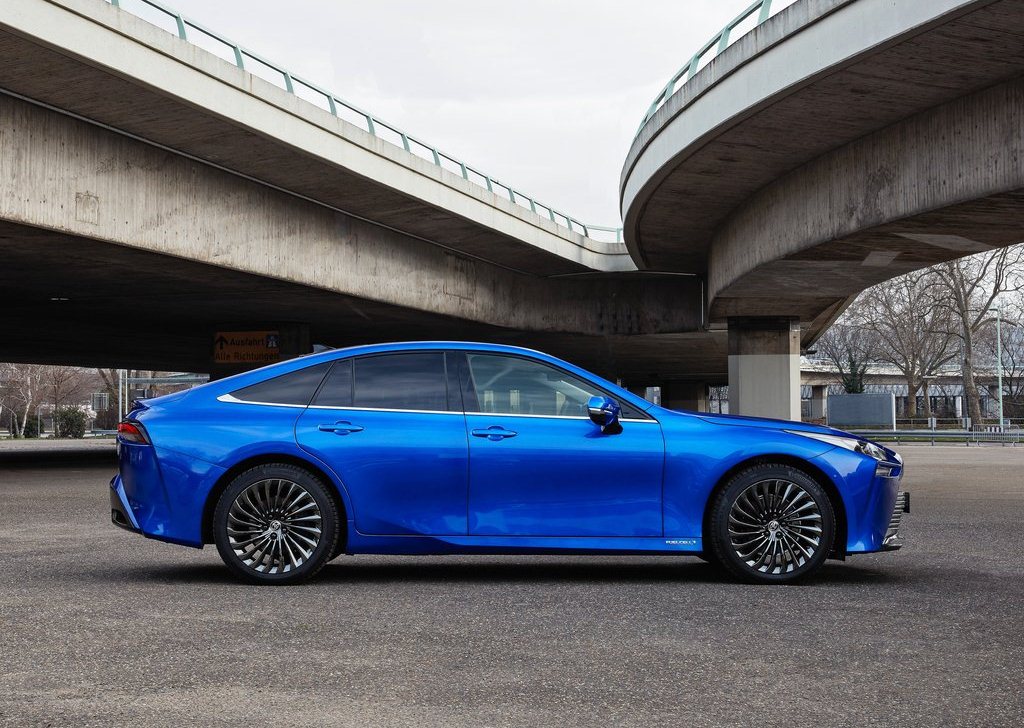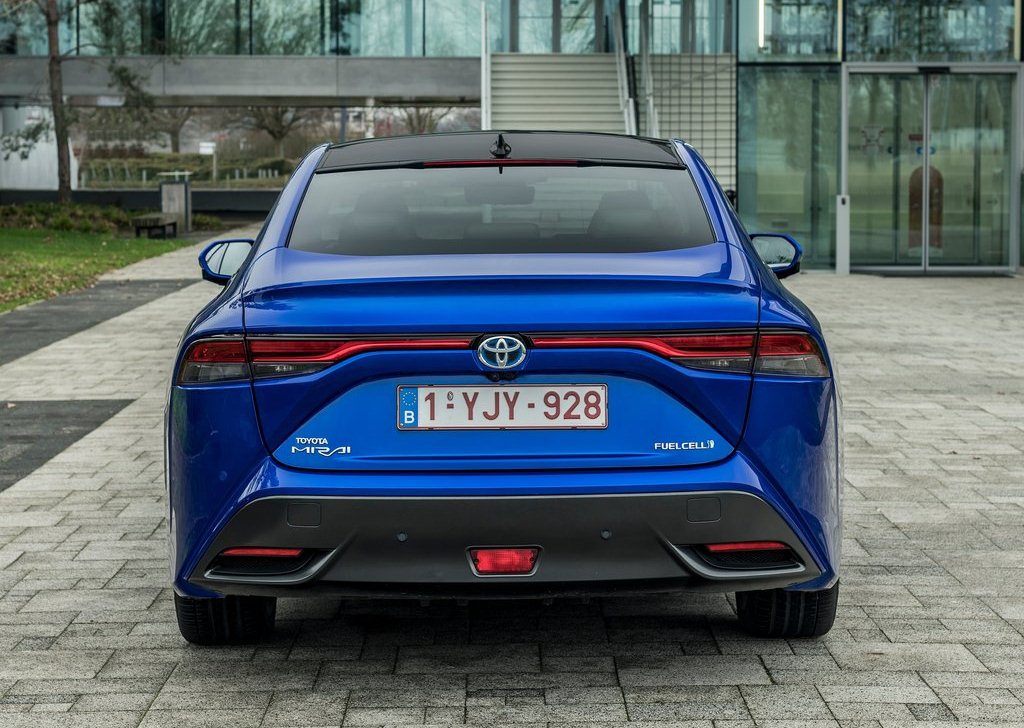Toyota's vision for a future sustainable hydrogen society recognises the value of hydrogen as a viable and plentiful resource for carrying and storing energy. It has the potential to deliver zero carbon mobility, not just in road vehicles but equally in trains, ships and planes, and to generate power for industry, businesses and homes. It's also an efficient means of storing renewable energy and can be transported to where it's needed.
Toyota began development of a hydrogen fuel cell electric vehicle in 1992, successfully introducing the Mirai sedan to world markets in 2014. This breakthrough achievement was founded on the company's world-leading experience in hybrid technology, the core technology for a wide range of different electrified vehicle powertrains.
Improvements in performance and design
In developing the new Mirai, Toyota was committed to delivering all-round improvements to increase customer appeal, from its performance capabilities to the way it looks and drives.
A priority has been to improve its driving range compared to the first generation model and going beyond the distances typically achieved by battery electric vehicles. Increased power and hydrogen fuel capacity, improved efficiency and better aerodynamics all contribute to extending the driving range by 30% to around 650 km. This gives the new Toyota Mirai a genuine long-distance driving capability.
More emotional customer appeal
One of the principal aims for the new Toyota Mirai has been to give the car a stronger emotional appeal, making it a car that people will be attracted to by its looks and the way it drives, as well its eco-performance. The new GA-L platform and Toyota's advances in FCEV technologies have made this possible.
GA-L platform
Adopting the GA-L platform has allowed the fuel cell stack and drivetrain components to be repackaged in a way that makes more efficient use of space. The result is a more spacious, five-seat cabin and a better chassis balance. Perhaps most significantly, it enables three high-pressure hydrogen tanks to be fitted, increasing fuel capacity and the car's driving range - by 30%.
The tanks are arranged in a "T" configuration, the longest running longitudinally and centrally beneath the vehicle floor, with two smaller tanks set laterally beneath the rear seats and luggage compartment. Together they can hold 5.6 kg of hydrogen, compared to 4.6 kg in the current Mirai's two tanks. Their position contributes to the car's lower centre of gravity and avoids compromising load space.
New fuel cell stack
Toyota's new fuel cell stack and fuel cell power converter (FCPC) have been developed specifically for use with the GA-L platform. The designers have been able to bring all the elements together in the stack frame (including the water pumps, intercooler, air conditioning and air compressors and the hydrogen recirculation pump) with each part made smaller and lighter, while at the same time improving performance. The stack case itself has been made smaller by using Friction Stir Welding, reducing the gap between the fuel cell and casing.
The fuel cell stack uses a solid polymer, as in the current Mirai, but has been made smaller and has fewer cells (330 instead of 370). Nonetheless, it sets a new record for specific power density at 5.4 kW/l (excluding end plates). Maximum power has thus risen from 114 kW to 128 kW. Cold weather performance has been improved with start-up now possible at temperatures from as low as -30.
Lithium-ion battery
The new Toyota Mirai is equipped with lithium-ion high-voltage battery in place of the current model's nickel-metal hydride unit. Although smaller in size, it is more energy-dense, giving higher output and superior environmental performance. Containing 84 cells, it has a 310.8 rated voltage compared to 244.8, and a 4.0 Ah capacity, versus 6.5 Ah. Overall weight has been reduced from 46.9 to 44.6 kg. The output has improved from 25.5 kW x 10 seconds to 31.5 kW x 10 seconds.
The battery's smaller dimensions have allowed it to be positioned behind the rear seats, avoiding intrusion in the load compartment. An optimised air-cooling path has been designed, with discreet inlets either side of the rear seats.
Dynamic performance
The adoption of the GA-L platform for the new Toyota Mirai gives the car fundamental benefits of a lower centre of gravity, improved inertia characteristics and significantly increased body rigidity, all of which help deliver superior dynamic performance.
With the fuel cell stack moved from beneath the vehicle floor to the front compartment and the battery and electric motor positioned at the rear, a 50:50 front:rear weight balance has been achieved, giving it the fundamental stability characteristics of a front-engine car. The rigidity of the body has been increased with strategic bracing and reinforcements, the wider application of body adhesives and the use of laser screw welding.
Cleaning the air as you drive
A Toyota innovation, a catalyst-type filter is incorporated in the air intake. As air is drawn into the vehicle to supply the fuel cell, an electric charge on the non-woven fabric filter element captures microscopic particles of pollutants, including sulphur dioxide (SO2), nitrous oxides (NOx) and PM 2.5 particulates. The system is effective in removing 90 to 100% of particles between 0 and 2.5 microns in diameter from the air as it passes into the fuel cell system.
Targeting a 10-fold increase in sales
The introduction of the new Mirai will see Toyota target deeper market penetration with a 10-fold expansion in sales volume. This growth will be supported by the new model's stronger performance and greater customer appeal, notably as a more affordable vehicle with a selling price reduced by around 20%.
The practicality of hydrogen FCEV ownership will also steadily increase as markets improve their hydrogen infrastructure, the number of filling stations rises and Governments and local authorities introduce new incentives and regulations for cleaner mobility.




















0 Comments